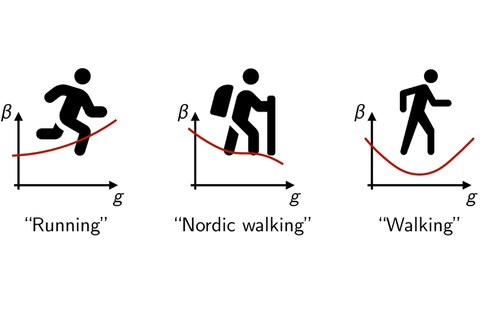May 19, 2025
Research: Nordic-walking mechanism
The renormalization group (RG) framework describes how the parameters of a theory, such as coupling constants, masses, or temperature, change as the system is examined at different energy scales. This evolution is captured by the RG flow, which is mathematically governed by a set of beta functions.
In typical situations, at least one beta function is sizable, causing the parameters to run rapidly with the energy scale. In contrast, some systems exhibit walking behavior, where all beta functions remain small over a wide range of scales. This leads to a slow RG flow, in which the parameters evolve gradually, indicating near scale-invariance.
Researchers from SFB 1143, in collaboration with groups in Bochum, Germany and Odense, Denmark, have now identified a third scenario. In this case, the RG flow is faster than walking but slower than standard running, representing an intermediate regime. This novel mechanism leads to a finite but large correlation length and may occur in quantum magnets that undergo a weak first-order deconfined quantum phase transition.
The researchers have dubbed this intermediate behavior “Nordic walking”, in reference to its position between walking and running. Whether the name also pays tribute to the geographical origins of the collaboration remains an open question, with no official comment from the team so far.
B. Hawashin, A. Eichhorn, L. Janssen, M. M. Scherer, S. Ray,
The Nordic-walking mechanism and its explanation of deconfined pseudocriticality from Wess-Zumino-Witten theory,
Nat. Commun. 16, 20 (2025) (arXiv)

